#Electric planer
Text
9 Essential Power Tools for all things DIY Projects and Your Home

Generally, whenever asked about power tools, people assume that its utility limits itself to construction sites. Reducing labor costs and increasing efficiency and effectiveness is what every construction company strives for these days. This is exactly where the function of a power tool begins but efficiency of these tools is not restricted to masonry or carpentry; it is much more handy than that. Some of the names that come up in the construction business whenever one has to look for a power tool are power hammers, reciprocating saws, air sanders, biscuit joiners, jackhammers, air impact wrenches and many more. As compared to other tools, power tools are always at one's fingertips given how accessible they are. Whether it be Bosch, Ferm, Dewalt, Cumi, Hitachi or Black & Decker, it is all very readily available. Although, as far as quality and credibility is concerned, Bosch Power Tools stand way apart. With production of superior-quality products, supplying most suitable equipment for DIY, sustenance and other innovative features, Bosch Power Tools truly make a mark in excellence and goodwill.
If we look at industrial tools that can be used for do-it-yourself projects and at home, we can expectantly say that power tools are the safest and the best option for the same but the ones that we just mentioned aren't the best options considering they are recommended mostly for professionals. Not to worry! When we say that we have all your industrial needs and problems covered, we mean all of it but what about the tools that you would need when you are at home? Well, we are here for that too; a complete solution only for you. In the generation of smartphones, it is no question that everybody has an opinion or a suggestion for everything. If you go out there to research about what kind of power tools you would need for a DIY project or at home, you would get a thousand unnecessary recommendations. In this blog, we will share 9 most essential power tools for home, as listed below.
Circular saw
Cordless drill
Electric planer
Impact driver
Orbital sander
Jigsaw
Mitre saw
Router
Nail gun
Power Tools are fundamentally the kind of tools which are run by electricity. They can be used for a wide range of activities which deduce the amount of manual labor or cost that generally goes in using compressed air, electric motors, etc.
Circular Saw
A circular saw is mostly used in carpentry, so needless to say that it goes a long way for the cabinetmakers. They use a circular blade that is fringed with honed metal teeth. They work in a way for which the blade spins itself to cut the wood evenly. There are a number of blades readily available for craftsmen to cut a variety of materials that include timber, lumber, etc. Their features of specialized blades always keep them apart from the rest as they can be used very easily to cut sheet metal. Some circular saw models are handheld which makes it even more feasible for home.
Cordless drill
This is a power tool that can do the work of both a drill and a screwdriver; it can drill holes as well as drive screws. It is safe to say that a cordless drill is the most useful power tool for any DIY enthusiast as it comes in very handy. Some of the major uses of a cordless drill can be that they can be used to put holes in walls, wood or any other rough surfaces. They can be used to fix fasteners onto surfaces as well. Basically if you plan on remodeling your kitchen, a cordless drill would be your go to power tool.
Electric planer
Also known as a power planer or thickness planer, an electric planer is a handheld power tool used for removing material from the surface of wood, creating a smooth and even finish. It consists of a revolving cutting head with multiple blades that shave off thin layers of wood with each pass. Electric planers are widely used by carpenters and DIY enthusiasts for various woodworking projects. They are valuable tools for shaping, resizing, and smoothing wooden boards, beams, and other materials. They can be used in projects ranging from building furniture and cabinets to crafting wooden sculptures or trim work to fixing a door.
Impact Driver
One of the most coherent power tools for DIY projects and at-home use is an impact driver. Being handheld is the primary advantage of an impact driver followed by how lightweight and compactable it is. It mainly is used for driving screws, bolts and nuts, which is the most commonly needed function in DIY projects. To sum up, impact drivers are strong, tactful, and multipurpose tools that stand out when it comes to driving screws and many other fasteners. They have become a well known name among DIY enthusiasts due to their speed as they cause a high rotational force, known as torque, which allows them to handle difficult tasks but with a fastening approach. Moreover, they are a major convenience in work and possess the ability to handle strenuous tasks.
Orbital sander
If you want to make a cabinet for your lovely home or build a staircase to protect your loved ones or manufacture a toy for your child, your one stop power tool would be an orbital sander. Orbital sanders are hand-held tools which are the biggest advantage for a DIYer. They function by spinning themselves elliptically, creating a base that is smooth. These sanders can be used for removing rust from steel as well, which again is a big advantage for a DIYer.
Jigsaw
If there was an answer to how to cut nonlinear shapes and edges, it would be a jigsaw. It's a hand tool consisting of a thin blade that has a manageable throttle trigger for fluctuating cutting speed. A jigsaw is ideal for intricate shapes and curves that are so small that they can be cut by hand. This handheld saw is used in cutting wood or metal by the simple process of changing the blade, which is extremely small and thin and easy to use. Basically if you want to sharpen the edges of your craft, jigsaw is your only stop.
Mitre saw
Mitre saws are very well known among DIY enthusiasts and homeowners. They are multi-purpose tools that can be used for various home improvement projects, such as building furniture, installing flooring, constructing decks, or framing walls. It mainly is used in cutting flat ends, although a mitre saw's rotating feature makes it so versatile that it can be utilized in woodworking as well.
Router
Router is yet another handheld, electric power tool used in carpentry and furniture making. It comprises an electric motor, two handle knobs, a base and bits. It is a multi-purpose tool that apart from its utility in cabinet work, helps in many day to day household jobs, such as shelving, grooving for storm windows and weather stripping or basically making round corners on work of all types.
Nail gun
More commonly known as nailer, a nail gun is fundamentally a form of hammer. Like the name suggests, a nail gun is used to nail anything in and out of a craft. They have a varied range of uses and for DIY, their range starts from firing wire-thin brad nails into trim. Some of the common places of utility for a nail gun are installing baseboards, roofing materials, crown molding, putting up a house house siding, building furniture, laying hardwood and many other common utilities at home.
Conclusion
To sum it up, these nine power tools are a big solution to all your carpentry and problems at home. These recommended power tools are all easy to use and safe, although the necessary precautions are to be strictly followed. So what are you waiting for? Make your life 10 times easier with these multi-purpose power tools and see how much of the cost cutting your budget ultimately sees.
#Essential Power Tools#Bosch Power Tools#Circular saw#Cordless drill#Electric planer#Impact driver#Orbital sander#Jigsaw#Mitre saw#Router#Nail gun
0 notes
Text
youtube
"Season of the Witch" is a song by Scottish singer-songwriter Donovan from his third studio album, Sunshine Superman (1966). The song is credited to Donovan, although sometime collaborator Shawn Phillips has also claimed authorship.
"Season of the Witch" was recorded at the CBS studios in Hollywood, California, where most of Sunshine Superman was recorded. According to Donovan, he and Phillips wanted a "rock-combo sound" for the song and chose some local musicians from the local clubs. They included Lenny Matlin on keyboards, Don Brown on lead electric guitar, Bobby Ray on bass and "Fast" Eddie Hoh on drums. Donovan played the second guitar part, as he explained in his autobiography:
I played a white Fender Telecaster Electric Guitar on "Witch," chunking down on the chord pattern, wailing a chilling chorus. A major seventh with an open G, to D 9th with a G-flat bass (Bert Jansch chord). The riff is pure feel.
In a retrospective song review for AllMusic, Lindsay Planer commented: "Few songs so perfectly reflect the dawn of the psychedelic pop era as aptly as Donovan's 'Season of the Witch' ... Both lyrically as well as musically, the languid and trippy contents project a dark foreboding atmosphere [and] a sort of sinister tale of paranoia and the paranormal". John Bush called the song "easily [one of the two] the highlights of the album ... a chugging eve-of-destruction tale"
#Dark Shadows#Johnny Depp#witches#Tim Burton#Eva Green#gothic#Barnabas Collins#vampire#Michelle Pfeiffer#Bella Heathcote#Chloe Grace Moretz
46 notes
·
View notes
Text
Been playing the shit out of Satisfactory and it has come to my attention, again for third time, that my power grid is trash and cannot keep up with my expansions.
Spent the past 4hrs reworking my electrical grid.
I now slightly respect city planers a tad more.
18 notes
·
View notes
Text
Repair your electric woodworking tools! No need to waste money on new tools. Many more parts available in our store.
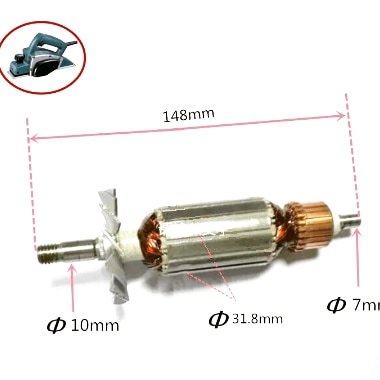
https://shop.tittlesntattles.org/parts/557-makita-electric-planer-rotorarmature.html
8 notes
·
View notes
Text

U.S. Marine Corps analyzes 'maritime gliders' options
Fernando Valduga By Fernando Valduga 10/20/2023 - 13:00 in Military
REGENT (Regional Electric Ground Effect Nautical Transport), a manufacturer of all-electric sea gliders for sustainable marine mobility, has signed an agreement with the Marine Corps Warfighting Lab (MCWL) to demonstrate the technology of marine gliders for defense logistics operations.
Viceroy seagliders are hydrofoilies with wing effect on the ground that operate exclusively in the maritime domain. They address a recognized gap within the U.S. Department of Defense for high-speed, low-cost, low-subscription and low-noise mobility in coastal areas and fulfill a number of mission sets, including troop and cargo transportation, expeditionary transportation in advanced base operations and communications.
The Viceroy will be able to carry up to twelve passengers or almost 1,600 kg of cargo over a distance of almost 300 km. With future battery capacities, Regent expects 'flights' of up to 900 km.
REGENT also signed an agreement with Surf Air Mobility to establish a base for operations of these "planers" in Miami.
Tags: Military AviationseaplanesRegentUSMC - United States Marine Corps/U.S. Marine CorpsViceroy
Sharing
tweet
Fernando Valduga
Fernando Valduga
Aviation photographer and pilot since 1992, has participated in several events and air operations, such as Cruzex, AirVenture, Dayton Airshow and FIDAE. He has work published in specialized aviation magazines in Brazil and abroad. Uses Canon equipment during his photographic work in the world of aviation.
Related news
On the 12th in October 2023, the Serbian air forces officially put their first C295MW into service. (Photo: Ministry of Defense of Serbia)
MILITARY
Serbia puts its first Airbus C295MW into service
20/10/2023 - 11:00
MILITARY
Saab delivers the first serial-produced Gripen E fighter to Sweden's Defense Material Administration
20/10/2023 - 09:08
MILITARY
US forces are attacked in the Red Sea, Syria and Iraq
20/10/2023 - 08:48
MILITARY
Philippine Air Force acquires Lockheed C-130J-30 Super Hercules aircraft
19/10/2023 - 22:41
EMBRAER
IMAGES: First KC-390 Millennium in the NATO configuration enters service in the Portuguese Air Force
19/10/2023 - 17:47
MILITARY
Putin announces MiG-31 permanent patrols with hypersonic weapons over the Black Sea
10/19/2023 - 4:00 PM
4 notes
·
View notes
Text
Reading the instructions on my new electric wood planer...🤣🤣🤣 trustworthy foe
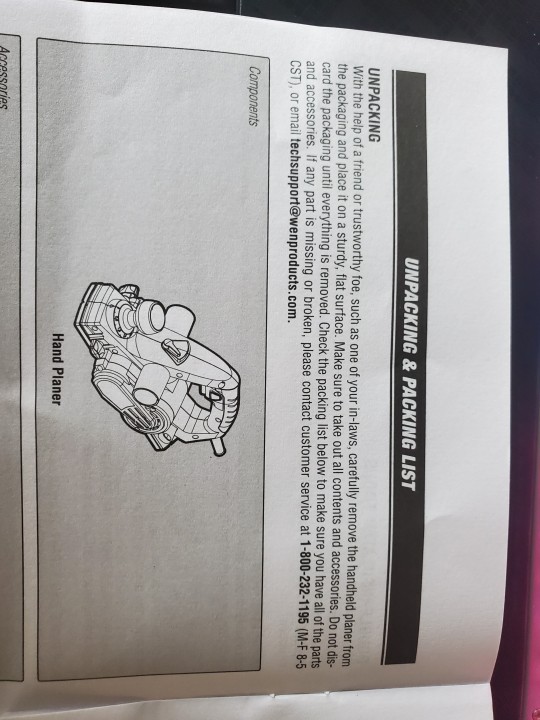
8 notes
·
View notes
Photo
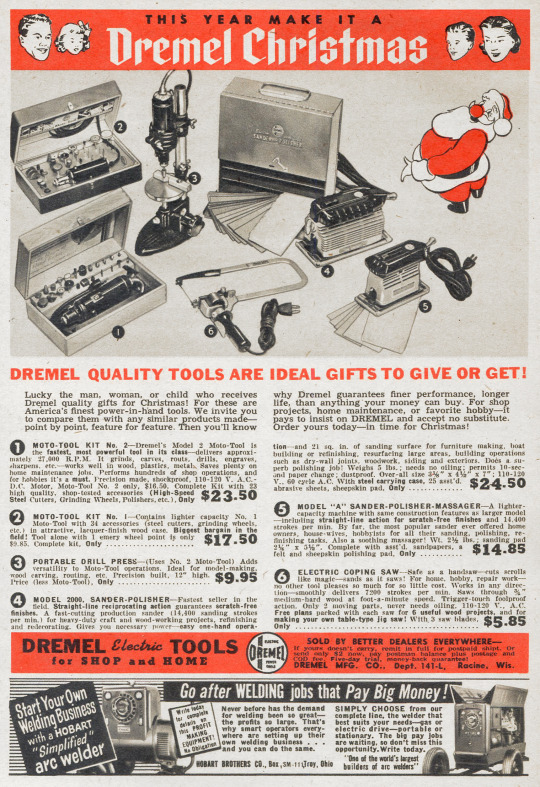
What 6 year girl wouldn’t want an Electric Coping Saw. It goes perfectly with her Barbie Power Planer and her My Little Pony Rabbiting Tenon Milling Cutter.
Mechanix Illustrated November 1951
#vintage ad#vintage ads#advertising#advertisment#1951#tools#power tools#dremel#1950s#1950s ad#1950's#1950's ad#funny#humor#humour#xmas ad#christmas ad#christmas gifts#santa#santa claus
6 notes
·
View notes
Text
An Overview of Woodworking and its Benefits

Woodworking is the craft of making decorative products from wood, including cabinets, stools, and tables. Wood has been a popular material for making tools and utensils since medieval times. Idols, chairs, and vessels in early civilizations were made from wood, and technological advancements kept redefining the dynamic uses of this material.
The earliest forms of woodworking are traceable to ancient Chinese and Egyptian civilizations. Numerous old Egyptian drawings showcase wooden products. Various pieces of furniture, including beds, tables, and chests, have also been preserved in tombs. Moreover, these tombs preserve Egyptian coffins and boat hulls from 3000 BC as further evidence to support the popularity of wood in ancient times.
Besides the financial benefits of selling finished products, woodworking is a viable hobby with psychological and social benefits. This activity helps improve concentration. Successful completion of projects requires paying close attention to dimensions and techniques.
Experts claim this activity can help undo stimulants, depressants, hallucinogenics, and opioids' adverse effects on cognitive functions. Woodworking operations exercise the mind and improve the attention span of these people and other enthusiasts.
Woodworking also improves fitness and body strength. This activity stretches muscles as enthusiasts operate tools and handle wood. Moreover, woodworking optimizes joint movements and enhances agility.
Moreover, there are many clubs and organizations that maintain professional societies for enthusiasts. Together with formalized blogs and online forums, these entities help develop networks among people with this interest for social and business purposes.
Woodworking clubs can also foster creativity. Enthusiasts showcase their work and can encourage beginners to express themselves to create unique projects. Information on new tools and techniques is available on these forums to encourage hobbyists to transform their imagination into finished products.
Routing, drilling, gluing, sanding, and finishing are popular woodworking activities. Routing involves creating finished edges and patterns by trimming and shaping wood. Hobbyists can draw designs on the surface and cut the wood to create unique edges.
Drilling involves using a drill and bit to bore holes in wood. Gluing, on the other hand, entails joining wooden pieces to create large projects. If done correctly, glued pieces form more solid and dense joints than the original wood.
In sanding, woodwork enthusiasts use sandpaper to smoothen wooden surfaces. It is advisable to start with medium grit and gradually advance to a finer grit to produce uniquely smooth projects. Lastly, finishing involves applying finishes to refine and protect wooden surfaces. This final woodworking operation gives projects eye-catching aesthetics while protecting wooden products from water.
Woodworking tools fall under two categories; hand and powered resources. Hand tools require hobbyists to hold and operate them. These include clamps, chisels, claw hammers, hand planes, and a tape measure. On the other hand, power tools use power from external sources such as batteries and electricity. They include drills, jointers, table saws, palm sanders, and thickness planers.
Woodwork enthusiasts can choose between hardwood and softwood for their projects. Hardwood comes from deciduous trees that grow slowly and require lengthy drying times. Experts consider hardwood the ultimate material for building exquisite projects, including flooring, musical equipment, and boats because they are strong and durable. Popular hardwood types include teak, oak, maple, and mahogany.
Softwoods come from evergreen trees that mature and dry faster than hardwood trees. For this reason, they are cheaper than hardwood and are popular in interior moldings, including windows and plywood. Cedar, fir, and pine are familiar sources of softwood.
2 notes
·
View notes
Text
-
(Sorry for rambling so much lately, I've been very not-good.)
I got a cheap hand plane for working wood.
It's pretty terrible, and probably not actually for wood. I had some ideas about how I could improve it, and possible new designs in general. And most importantly I thought of a clever way to set the depth and tilt of the blade, the plane itself having no mechanisms to do so. And uh, I did so by laying the plane on a piece of glass, letting the blade slide forward until the glass stopped it. Except that leaves the blade exactly in line with the body. So I added a piece of paper, and set the blade to protrude exactly the width of one piece of paper. And that was way too much. hopes dashed. was kind of excited about it too. Then my improvements, tuning up the thing, doesn't work either. I don't have the room. The mouth, the little slot the blade protrudes through, at the angle the blade sits at I can't even fit a popsicle stick through it. Any work on that would have to be done with a milling machine. I don't have a meaningful amount of access to use a file or something until the angle is around 45°. And hey, that's probably why old wooden planes are built like that. New designs, my thoughts were to have one where the blade sits flush with the 'heel', and the depth of cut is adjusted by raising the 'toe', like an electric planer. In the interim, I could lap the toe a little shorter (higher?) than the heel. And the other thought was to make the blade the sole of the plane itself, so you get an actually low angle of ~25° rather than the usual "low angle" 12°-20° bed angle plus 25°+ sharpening angle which often ends up close to 45° anyway. But I don't think either of those things would be cost-effective. The problem is getting everything perfectly lined up. Like, blade-on-the-bottom would have to be perfectly parallel. I'd essentially need a modular design where every individual component could itself be adjusted. The traditional 'blade through a block' design is cheap and forgiving, and it'd be a whole lot easier to shape one exactly how I want it rather than try to make it adjustable.
So maybe I'm just stupid for thinking I can do better.
That brings me to the other thing I wanted to ramble about.
I can't answer to others anymore.
I keep getting trapped being 'sorry'. Like the above, I'm a stupid piece of shit for thinking I might be able to do something good, and I'm a stupid piece of shit for not understanding everything the moment I saw it. And if I try to reason with the voice in my head it just twists things around constantly, as it has learned from others. As I was saying before (I think), I have a hard time even having a position, because other people constantly shift the context of whatever it is we're discussing. And I pretty much always have some speculation as to what's happening, but it's never going to be confirmed. And even if Cat suddenly becomes reasonable, she doesn't have time for me. So, I have to find a solution in spite of it all. stop playing whatever game this is. A bit of a challenge, as I don't know what the game is or why I'm playing. I am constantly trying to figure out what's going on, so I guess that's part of it. That's my 'win' condition? and other people are antagonistic to that, for some reason? anyway. To understand generally, I'd have to start with observation, then hypothesize etc. And that (inversely) correlates, the worst responses I've gotten were when asking "What makes you think that that's true?" and "What have you actually observed?" So I should tell people to fuck off if they won't share their premises? Which brings me to 'why', which is that I want to connect, and my way is clearly getting further away from the connection I want. Intellectually I know it's a dead end, the final step is destroying whatever I am and accepting everything they tell me uncritically and unconditionally. especially if it's not logically valid. They tell me what to think, I think it, they tell me what to feel, I feel that. Except then I am not there to connect, and it just doesn't work, blah blah. I guess I still believe this is the path to connection.
How do I believe something else?
Going by other subjects, results? Say, when I was wrong about what makes eggs stick to a frying pan. I had my reasons, and when it didn't work I assumed I must just be doing it wrong. The assumptions continued until I formed a new hypothesis, and I didn't change my mind until it worked. So, my inclination is to make another hypothesis about people, but that doesn't work. It has to be about connection instead? What about it? Gosh, what am I even thinking currently? That everything done makes sense in some perspective, and all I have to do is figure out what that perspective is? (Thanks for that, Discordianism.) Alternatively: a thing/idea is only able to be understood if the premises/context and argument/reasoning are known. Results, I'll need something I've done myself. understood myself. That's difficult, as uh, I've never really finished anything.
Okay, did a thing.
The plane I was talking about, I did the interim thing. It worked exactly as I expected: setup is easy and it makes a perfectly flat surface. But also that's not necessarily a good thing? I learned some things. Not worth getting into. But in short, I think hand planes are less 'flat-makers' and more 'very well controlled chisels'. Aside, it's another instance of the way other people frame the issue seems completely off-base.
So, what about it?
I observed some things, formed a model of how they work, made a guess based off that model, and verified that model by successfully implementing something based on my guess. (As opposed to someone telling me the 'correct' way to do the thing, which I just believe, and then I struggle and fail to find observations and rationale which correlate.) How would that relate to communication? On my end, I would (and I think I already do?) share: the conclusion, the observation itself, the reasoning, and to what extent I am certain of the conclusion. (In parentheses to mark where this example stops, 'cause it's kind of long and beside the point. But yeah, I'd go over all this if sharing. Like: I believe intonation of guitar is greatly improved by having a gradient of tension on the strings, because typical guitars sound slightly out of tune to me enough to give me a nails-on-a-chalkboard feeling, but multi-scale guitars sound acceptable, the slightly longer scale length on the lower strings would mean proportionally more tension on the lower strings, so I think tension is directly correlating factor, really I think it's due to flexibility and how much sharper a string goes when it's pressed down, and I'm pretty sure but I haven't successfully tested it yet.) But for others? Well, the mechanism can't be any different. I'll have to ask for what they've observed, the rationale about it, and what makes them think their idea is actually true. And if they won't answer then I know they're either lying or have no understanding of what they're saying. But most importantly, what they mean when they say things? Like, "why are you being such a scrumbus?" Yeah, still need the rationale and the observation. What pattern does the word/phrase refer to? what is a concrete instance of the pattern? and I will rephrase to confirm.
And if they won't share that?
Then they're lying. They can't just not know what they themselves mean. They're blatantly lying or there's not a person in their head. And as a practical issue, I can't ask questions to a video or article, and in most situations the human in question would never be willing to clarify. What do I do, passively? The mechanisms are the same; premise/argument/conclusion or observation/hypothesis/testing. So if the pieces aren't all there, don't assume they must exist? Like, if expert man on the internet says 80/20 bronze guitar strings have scooped mids*, unless I have my own reasons to think so, just disregard it? Or if it's say, a doctor. The human I'm talking to might be insane or absent, but I'd either have to just trust that the system they are slave to is going to do me more good than harm, or find a new doctor. And most practically, a whole lot of the time people are telling others how they should feel. So like, (guitar strings again) I'm watching this one dude saying "X strings sound 'darker' and Y strings sound 'brighter'". Which is subjective, and also completely opposite of what it sounds like to me. So, subjective assertions should be ignored entirely all the time? Yeah, if it is just as assertion. And I suppose I shouldn't need to say that gaslighting should be disregarded.
Lastly, practical application: what do I do about feeling sorry?
There's a couple way to reason at it, but my imaginary accuser will never be satisfied. I guess that would mean not 'plugging in' to understand anymore. As opposed to, analyzing? Starting with premises/observations? I don't think it could be anything else. It's annoying. It feels a bit like whenever I try to make something. I want to just grab the material, the one tool I need, and just make the thing real quick. But actually, I need a handful of tools for measuring and shaping and finishing, and I need a way to hold the piece securely while I work on it, and I have to clean up afterwards from the dust of what have you. So, making one little thing means going through the whole tedious process. It's tiring and disheartening. but necessary.
Does it work?
Say, I have this bad memory related to a Stratocaster.
I said something stupid, in some sense I was trying to connect and failed helplessly. Analyzing, I was forbidden from thinking and feeling at the time. And no one ever gave me any feedback about anything; I was compliant enough that no one would yell at me. So I didn't know what I was doing, didn't know why I was doing it, and did so thoughtlessly. Because I was mocked, bullied, belittled, or berated for voicing any independent thought or showing even a hint of a possible expression. Because they put me in a double bind with no way out. And it was wrong of them to do that to me. And it was wrong of them to not be straight with me. I ought to be allowed to at least mention pretty much anything if no one's given me a reason not to, and it's wrong for others to gaslight me if I do.
That works.
I uh, don't feel better.
I guess it's safer? to think I'm just doing something wrong. or to be so depressed I can't think about it. The essence of torture world is that no one runs on any kind of logic and almost all of them will try to hurt me if they think they can get away with it. I am stressed and afraid.
-
*(Aside, I do have such reasons. I had noted before my guitar had very weak mids. But I recently changed the strings, and the mids are plenty strong now. The new strings are phosphor-bronze and have a red tint to them, and I don't know what the old strings are exactly but they're a dull brass-yellow. Incidentally, '80/20 bronze' is apparently 80% copper and 20% zinc, which is "low brass" according to Wikipedia. So yeah, that's probably what was happening.)
0 notes
Text
Segmenting the Power Tools Market: Strategies for Targeted Marketing Campaigns
Power Tools Market Overview:
In 2021, the power tools market was estimated to be worth USD 44.6 billion. According to projections, the power tools market will expand at a compound annual growth rate (CAGR) of 5.9% from USD 47.23 billion in 2022 to USD 73.8 billion by 2030.
Power tools play a pivotal role across various industries, providing efficiency, precision, and productivity in tasks ranging from construction and manufacturing to woodworking and DIY projects. The global power tools market has witnessed substantial growth driven by technological advancements, industrial automation, and increasing demand for high-performance tools. This article provides an in-depth overview of the power tools market, including segmentation analysis, key takeaways, and regional insights.
For latest news and updates, request a free sample report of Power Tools Market
By Segmentation:
1. Product Type:
a. Electric Power Tools: This segment includes corded and cordless electric tools such as drills, saws, sanders, grinders, and routers, powered by electricity for versatile and efficient operation.
b. Pneumatic Power Tools: Pneumatic or air-powered tools utilize compressed air to drive mechanisms such as impact wrenches, nail guns, and sanders, offering high power-to-weight ratios and durability in industrial applications.
c. Hydraulic Power Tools: Hydraulic tools use hydraulic fluid to generate power for tasks such as cutting, bending, and pressing, commonly found in heavy-duty construction, automotive, and manufacturing operations.
2. End-User:
a. Construction: Power tools are indispensable in construction activities, including drilling, cutting, fastening, and finishing tasks, contributing to efficiency, accuracy, and safety on construction sites.
b. Manufacturing: Industries such as automotive, aerospace, electronics, and metal fabrication rely on power tools for precision machining, assembly, and surface finishing processes, enhancing productivity and product quality.
c. Woodworking: Woodworkers and carpenters utilize a wide range of power tools such as saws, routers, planers, and sanders to craft furniture, cabinets, and other wooden products with speed and precision.
d. DIY Enthusiasts: Homeowners and hobbyists use power tools for various do-it-yourself projects, renovations, and repairs, driving demand for compact, user-friendly tools with advanced features.
3. Region:
The global power tools market is segmented into key regions, including North America, Europe, Asia Pacific, Latin America, and the Middle East & Africa. Each region exhibits distinct market dynamics influenced by factors such as industrialization, infrastructure development, technological adoption, and regulatory environment.
Key Takeaways:
1. Technological Advancements: Continuous innovation in power tool design, materials, and functionality, including brushless motors, lithium-ion batteries, and digital controls, enhances performance, durability, and user experience.
2. Industry 4.0 Integration: The convergence of power tools with digital technologies such as IoT (Internet of Things), AI (Artificial Intelligence), and cloud connectivity enables remote monitoring, predictive maintenance, and data-driven insights, optimizing operational efficiency and uptime.
3. Safety and Ergonomics: Manufacturers prioritize safety features and ergonomic designs in power tools to minimize user fatigue, reduce the risk of accidents and injuries, and enhance overall user comfort and productivity.
4. Market Expansion in Emerging Economies: Rapid urbanization, infrastructure development, and industrialization in emerging markets such as China, India, and Southeast Asia drive the demand for power tools, presenting growth opportunities for market players to expand their presence and product offerings.
Regional Insights:
1. North America: The United States and Canada lead the North American power tools market, driven by robust construction and manufacturing sectors, technological innovation, and a strong DIY culture.
2. Europe: Germany, the UK, and France are key markets in Europe, characterized by stringent safety regulations, emphasis on sustainability, and growing adoption of smart and connected power tools.
3. Asia Pacific: China, Japan, and India dominate the Asia Pacific market, fueled by rapid industrialization, urbanization, infrastructure investments, and increasing demand for high-quality power tools in manufacturing and construction sectors.
4. Latin America and the Middle East & Africa: These regions offer growth opportunities due to expanding construction activities, infrastructure projects, and investments in industrial development, driving demand for power tools and related equipment.
The power tools market continues to evolve with advancements in technology, changing end-user preferences, and evolving industry trends. Manufacturers, suppliers, and distributors need to adapt to these dynamics, focusing on innovation, safety, and market expansion to capitalize on growth opportunities globally. By understanding regional nuances and catering to diverse end-user needs, stakeholders can navigate the competitive landscape and drive sustainable growth in the dynamic power tools market.
Top trending report:
HVAC System Market
Industrial Hand Gloves Market
Water Purifier Market
Agriculture Equipment Market
Power Tools Market
0 notes
Text
Power Tools Market Valuation to Reach $65.8 Billion by 2032
In 2022, the power tools market was valued at USD 31.7 billion and is anticipated to expand to USD 65.8 billion by 2032, boasting an 8.4% CAGR.
This market encompasses a wide array of electric and pneumatic devices essential for tasks across industries such as construction, manufacturing, automotive, woodworking, and DIY projects. Its growth is fueled by factors like urbanization, industrialization, infrastructure development, and technological advancements. Key players in the power tools industry consistently innovate to improve product performance, durability, and safety, with a keen focus on energy efficiency and sustainability.
Handheld power tools like drills, saws, grinders, and sanders, along with stationary tools such as benchtop drills, table saws, and planers, constitute the market's diverse offerings.
Request Sample Report: https://datahorizzonresearch.com/request-sample-pdf/power-tools-market-2559
Several key factors drive the power tools market:
Technological Advancements: Continuous innovation in power tool technology leads to improved performance, efficiency, and safety features, driving demand for newer products.
Industrialization and Infrastructure Development: The growth of industries such as construction, manufacturing, and automotive drives the demand for power tools used in various applications, including drilling, cutting, fastening, and polishing.
Urbanization: Rapid urbanization worldwide leads to increased construction activities, renovation projects, and infrastructure development, boosting the demand for power tools among professionals and DIY enthusiasts.
Preference for Cordless Tools: Advancements in battery technology have made cordless power tools more powerful and versatile, offering greater mobility and convenience, thus driving their popularity among consumers and professionals alike.
DIY Culture: The rise of do-it-yourself (DIY) culture, fueled by online tutorials and home improvement shows, has led to increased consumer spending on power tools for personal projects and home renovations.
Top Companies are:
Apex Tool Group, Atlas Copco AB, Emerson Electric Co., Hilti Corporation, Ingersoll-Rand PLC, Koki Holdings Co. Ltd., Makita Corporation, Robert Bosch, Stanley Black & Decker, and Techtronic Industries form a formidable lineup of leading players in the power tools industry. Each company brings its unique strengths and expertise to the market, contributing to innovation, quality, and competition.
From precision engineering to advanced manufacturing, these companies continually strive to meet the evolving needs of professionals and consumers alike, driving the growth and dynamism of the global power tools sector.
Market Segmentations:
By Product (2023–2032)· Drills· Saws· Wrenches· Grinders· Sanders· Others
By Mode of Operation (2023–2032)· Electric· Pneumatic· Others
By Application (2023–2032)· Industrial· Residential
For Further Information Regarding this Report: Ask For Discount:
https://datahorizzonresearch.com/ask-for-discount/power-tools-market-2559
Regional Analysis:
Asia Pacific commands a dominant position in the growth trajectory of the power tools market, holding over 30% of the market share and projected to maintain its supremacy with a robust compound annual growth rate (CAGR) of 5.7% throughout the forecast period. The power tools market in the region is valued at USD 10.4 billion, with China emerging as a pivotal player alongside major contributors such as India and Japan.
China stands out as a powerhouse in the power tools sector, boasting a significant market presence fueled by its diverse industrial landscape. With a multitude of industries driving demand, China secured the largest volume share of global demand in 2020 and is anticipated to remain a key driver of global power tools demand in the foreseeable future.
Key highlights of the report include:
1. The report delivers thorough Market analysis, furnishing valuable insights to guide strategic decision-making.
2. The comprehensive research outlined in the study enhances the depth of your presentations and marketing strategies.
3. By offering crucial insights into key market competitors, the study empowers businesses with a strategic edge.
4. It delivers a precise assessment of evolving market dynamics, ensuring readers stay abreast of the latest industry trends.
5. With meticulous breakdowns of various market niches, the report facilitates informed decision-making processes.
0 notes
Text
Planer Machines Rental In Mumbai, Maharashtra

Planer Machines rental in Mumbai Near You. ✓Industrial Wood planer machines on rent in Mumbai ✓Small planer machines for rent ✓Electric planer machines On rent.
#woodplanermachineforrentinmumbai#usedplanermachineforrentinmumbai#smallplanermachineforrentinmumbai#secondhandwoodplanermachineforrentinmumbai#secondhandplanermachineforrentinmumbai#planermachineforrentinmumbai#electricplanermachineforrentinmumbai#woodenplanermachineforrentinmumbai#industrialwoodplanermachineforrentinmumbai#rentzeasy#renteasy#rentseasy
0 notes
Text

The EDCO CPL-8G Scarifier, also known as the Walk-Behind Scari-Lite Crete-Planer, is an exceptional tool designed specifically for profiling and texturing initial layers of both concrete and asphalt surfaces. This powerful machine excels in efficiently removing thin coatings, ensuring a smooth and textured finish. It's important to note that while it's perfect for smaller-scale applications, it may not be suitable for larger removal projects typically handled by other Crete-Planers. The Sacri-Lite Planer operates on 110-volt electric power, offering versatility and ease of use. For rental inquiries and to obtain a quote, please reach out to Rentalex at (813)971-9990.
See the EDCO CPL-8G Scarifier here: https://www.rentalex.com/rental_equipment/tampa-floor-wall-finishing/8-walk-behind-scari-lite-crete-planer/
0 notes
Text
Advantages of D3 Tool Steel in High-Wear Applications
Thanks to its unmatched wear resistance, better toughness than other steel varieties, and high hardness, D3 steel has become a favourite among mechanics and engineers working on different applications. As an added advantage, it is also an economical choice for different cold-work steel projects. Here's a briefing on the different ways this variety of steel finds its use.
Shearing and Cutting of tools
The D3 steel is helpful in the metalworking industry as it helps in manufacturing tools to shear and cut. Such tools include, but do not remain restricted to:
Guillotine knives.
Slitters.
Circular-shaped saw blades.
Properties like wear resistance and high hardness make it ideal for making such applications.
For Cold Work Tools
It is a common choice for applications involving cold work tools, such as:
Dies for cold extrusion.
Coining dies.
Dies for cold heading.
This becomes possible because the D3 variety can still tolerate the weirdness and stress that typically come with such applications.
Stamping and Forming Dies
It is helpful in conducting stamping and forming procedures like:
Bending.
Blanking.
Embossing.
This property makes it a popular choice in aerospace, automobile, and metalworking industries.
Thread Rolling Dies
The D3 steel variety is useful for the production of Thread rolling dies, which are helpful in making:
Bolts.
Screws.
Threaded fasteners.
For Woodworking Tools
In carpentry, the D3 variety of tool steel is an efficient component for manufacturing various tools, such as:
Chipper knives.
Jointer knives.
Planer knives.
It's high. We are resistant, which helps in making effective woodworking cutting tools.
For Plastic Molding Dies
Mechanics often choose the D3 variety of steel to make plastic injection, as well as extrusion dies for molding. This is possible because of its relatively high hardness, along with wear resistance. The tools made from D3 steel also enjoy a prolonged service life.
For Deep Drawing and Drawing Dies
This helps in the making of different types of dies, which are helpful in applications involving the drawing of just any type of drawing. This is how it helps any metal shape assume just about any convenient shape that a mechanic or engineer would ask for.
Piercing and Blanking Tools
In the metalworking industry, the D3 tool steel variety works efficiently to produce piercing and blanking tools. This makes it a helpful component in the electrical and automobile industries.
On making Industrial grade Knives
The D3 steel variety is useful.in manufacturing different types of industrial knives. This includes but does not remain confined to:
Knives for film slitting.
Knives to foil slitter.
Paper cutting knives.
To Form Rolls
The machines for forming metal roles often work better with D3 steel varieties. This means that it helps in shipping metal sheets immaculately.
For Wire Draw Dies
You can use D3 to procure wire drawing dies. They are helpful in producing wires of various diameters.
Bar Cutters and Billet
These cutters are an efficient component to make the cleanest and the most precise cuts.
Some Extra Pointers
Despite all its advantages and utilities, there are certain things that you need to know about D3 steel tools:
Owing to its hardness, the D3 tools might need specialized machining.
It has moderate resistance properties. Hence, it might not be the perfect choice for applications that require the use of saltwater and harsh chemicals.
If your project needs applications that need hot work or toughness, there might be another grade of steel better suited for the purpose.
Make sure to consult your local D3 steel suppliers to look for the steel grades that would work perfectly for your project.
0 notes
Text
What Can I Run On a 4000 Watt Generator [Easy Guide]

As a generator advisor, I'm used to customers asking questions about their generators. But there's one question that comes up time and time again: "What can I run on a 4000 watt generator?" It's a great question and one that's worth exploring in a little more detail.
The answer depends on a few factors, like the specific make and model of your generator and the power requirements of the appliances or tools you're looking to run.
In this article, we'll look at what you can expect from a 4000 watt generator and some tips for making the most of your investment.
4000Watt Generators do not have 4000W power output. This is just Surge Watt (starting wattage for a few seconds); they are most likely a 3200-3500 watt generator.
They produce 33.3 amps on 120 Volts for surge, not for rating; for rated power, they only produce 29 amps or less, and 16.6 amps on 240 Volts is for starting, not running.
The Essential Conclusion
Rest easy; the 4000-watt generator can run all your essential home appliances. From lights to television, refrigerator to coffee makers, this mighty machine can keep them all up and running. So go ahead and enjoy a well-lit home, your favorite TV shows, fresh groceries, and a comforting cup of coffee, all made possible by the reliable power of the 4000-watt generator. But that's not all!
Keep reading this article for a more detailed list of appliances that a 4000-watt generator can handle. Discover the versatile capabilities of this generator and unlock the possibilities it brings to your daily life.
List of Household Appliances that a 4000 watt Generator can run

A 4000-watt generator is popular for homeowners looking for a reliable backup power source during outages or emergencies. With a 4000-watt generator, you can power several household appliances simultaneously, depending on their power requirements. It's essential to note that the wattage of an appliance determines how much power it requires to operate.
Here's a breakdown of the power requirements for some common household appliances:
- Refrigerator (600-800 watts)
- Freezer (500-800 watts)
- Window air conditioner (10,000 BTU) (1000 watts)
- Portable space heater (1500 watt) (1500 watts)
- Electric stove (one burner) (1500 watts)
- Microwave (1000-1500 watts)
- Electric water heater (4000-5500 watts)
- Washing machine (500-1000 watts)
- Clothes dryer (1800-5000 watts)
- Dishwasher (1200-2400 watts)
- TV (100-400 watts)
- Desktop computer (200-500 watts)
- Router/modem (10-50 watts)
- Lights (average home) (400-800 watts)
- Toaster oven (1200-1800 watts)
- Blender (300-1000 watts)
- Coffee maker (600-1200 watts)
- Electric kettle (1200-1500 watts)
- Iron (1000-1800 watts)
- Hair dryer (800-1800 watts)
- Curling iron (40-80 watts)
- Vacuum cleaner (500-1500 watts)
- Ceiling fan (10-90 watts)
- Water pump (well pump) (750-1500 watts)
- Sump pump (800-1300 watts)
- Garage door opener (500-800 watts)
- Power tools (drills, saws, etc.) (500-1500 watts)
- Air compressor (1000-2000 watts)
- Welder (smaller models) (1000-2500 watts)
- Fish tank equipment (50-100 watts)
List of Power Tools that a 4000 watt Generator can run
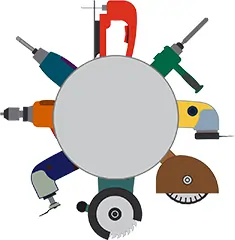
A 4000-watt generator is capable of powering various household appliances and power tools. Power tools are essential for construction, woodworking, and DIY projects. They require a steady flow of electricity to run efficiently and safely.
Choosing the right type of power tool for a project can make all the difference in its outcome. With a 4000-watt generator, you can power many different tools simultaneously, depending on their power requirements.
- Circular saw (1200-2200 watts)
- Table saw (1800-3000 watts)
- Miter saw (800-1200 watts)
- Reciprocating saw (800-1200 watts)
- Jigsaw (500-800 watts)
- Angle grinder (1000-1500 watts)
- Belt sander (800-1000 watts)
- Orbital sander (500-800 watts)
- Power drill (500-800 watts)
- Impact driver (500-800 watts)
- Router (1000-2000 watts)
- Planer (1000-1800 watts)
- Jointer (1000-1500 watts)
- Air compressor (1000-2000 watts)
- Welder (1000-2500 watts)
- Heat gun (1000-1500 watts)
- Electric paint sprayer (600-1000 watts)
- Leaf blower (500-1000 watts)
- Hedge trimmer (500-1000 watts)
- Chainsaw (1000-2200 watts)
- Pole saw (600-1000 watts)
- Pressure washer (1200-2500 watts)
- Tiller (1000-1500 watts)
- Lawnmower (1200-1800 watts)
- Edger (500-800 watts)
- Snow blower (1200-2500 watts)
- Generator (3000-4000 watts)
- Demolition hammer (1200-2000 watts)
- Concrete saw (1500-2500 watts)
- Tile saw (800-1200 watts)
List of Outdoor and Camping Equipment that a 4000 watt generator can run

If you plan a camping trip or spend time outdoors, having the right equipment can make all the difference. From grilling your favorite meals to keeping your drinks cool and charging your devices, outdoor and camping equipment adds convenience and comfort to your outdoor experience.
However, many of these items require electricity to run, which can be a challenge when you're away from home. Fortunately, with a 4000-watt generator, you can power various outdoor and camping equipment, making it easier to enjoy your time in nature.
- Electric grill (1200-1800 watts)
- Portable stove (1500-1800 watts)
- Electric cooker (50-100 watts)
- Electric lantern (25-100 watts)
- Portable air conditioner (800-1400 watts)
- Electric heater (1000-1500 watts)
- Electric water pump (500-1000 watts)
- Portable speaker (10-50 watts)
- Electric chainsaw (1000-2200 watts)
- Electric pressure washer (1200-2000 watts)
- Battery charger (50-500 watts)
- Portable fridge/freezer (50-100 watts)
- Electric fan (50-150 watts)
- Portable power station (500-1000 watts)
- Electric bug zapper (10-30 watts)
- Deep fryer (1500-2000 watts)
- Electric griddle (1500-1800 watts)
- Rice cooker (500-1000 watts)
- Toaster (800-1500 watts)
- Blender (300-1000 watts)
List of Office Equipment that a 4000 watt generator can run

Technology is essential in maintaining productivity and efficiency in today's modern workplace. From computers to printers, scanners, and other office equipment, businesses rely heavily on electricity to power their day-to-day operations.
However, power outages can happen unexpectedly, bringing business activities to a grinding halt. That's where a 4000-watt generator can come in handy, providing backup power to keep your critical office equipment up and running during an outage.
We'll discuss 20 pieces of office equipment that can be powered by a 4000-watt generator, along with their estimated wattage requirements.
- Desktop computer (200-500 watts)
- Laptop computer (50-100 watts)
- Printer (100-300 watts)
- Scanner (50-100 watts)
- Fax machine (50-150 watts)
- Shredder (50-100 watts)
- Copier (500-1000 watts)
- Projector (200-400 watts)
- Sound system (100-500 watts)
- Monitor (50-250 watts)
- Router/modem (10-50 watts)
- Phone system (100-500 watts)
- Cash register (50-150 watts)
- Credit card machine (20-50 watts)
- Time clock (5-10 watts)
- Electric pencil sharpener (20-50 watts)
- Calculator (5-10 watts)
- Desk lamp (10-50 watts)
- Air purifier (50-100 watts)
- Water dispenser (50-100 watts)
List of Healthcare and Medical Equipment that a 4000 watt generator can run

Access to reliable and uninterrupted power is critical for patient care and safety in the healthcare industry. Many medical devices and equipment require electricity to function properly, making backup power necessary in case of a power outage.
A 4000-watt generator can provide backup power to keep essential healthcare and medical equipment running during an outage.
In this section, we will discuss 20 pieces of healthcare and medical equipment that can be powered by a 4000-watt generator, along with their estimated wattage requirements.
- Oxygen concentrator (400-700 watts)
- Electric hospital bed (200-500 watts)
- Electric wheelchair (150-500 watts)
- CPAP machine (50-250 watts)
- BiPAP machine (100-350 watts)
- Nebulizer (50-250 watts)
- Blood pressure monitor (10-50 watts)
- Electric lift chair (100-250 watts)
- Electric heating pad (50-100 watts)
- TENS unit (20-50 watts)
- Electric massage chair (100-300 watts)
- Ultrasound machine (200-500 watts)
- EKG machine (200-500 watts)
- Electric dental drill (200-500 watts)
- Autoclave (2000-3000 watts)
- X-ray machine (1000-3000 watts)
- Electric surgical saw (500-1000 watts)
- Defibrillator (400-700 watts)
- Electric cautery (100-300 watts)
- Electric bone stimulator (50-100 watts)
Before plugging in any appliance or tool to a generator, it's crucial to understand the difference between 120V and 240V outlets and their corresponding power requirements. The distinction lies in the voltage and wattage capacity they can handle.
A 120V outlet, similar to standard household outlets, provides a voltage of 120 volts. It is suitable for smaller appliances and tools with lower power needs, typically ranging from 50 to 1500 watts. Devices like refrigerators, microwaves, and smaller power tools often fall within this range. It's important to note that using a 120V outlet for high-power appliances or tools that require 240V may result in equipment damage or ineffective operation.
On the other hand, a 240V outlet, often a twist-lock configuration, delivers a higher voltage of 240 volts. This type of outlet is designed to handle larger appliances and power-hungry tools requiring more wattage, usually ranging from 1500 to 5000 watts.
Examples include electric stoves, air conditioners, and clothes dryers. It's crucial to ensure that the appliance or tool you wish to connect is compatible with a 240V outlet and falls within the specified wattage range.
When connecting appliances or tools to a generator, always check the outlet type and verify the voltage and wattage requirements of the device. Doing so can ensure a proper match and prevent any potential damage to your generator or connected equipment, promoting safe and efficient operation.
Understanding Required Wattage and Generator Capacity
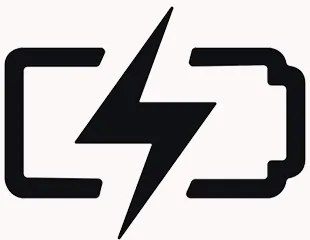
Wattage and generator capacity are two important factors to consider when it comes to power generation. Wattage is the amount of power that an electronic device or appliance requires to operate, usually measured in watts. On the other hand, generator capacity refers to the maximum amount of power that a generator can produce at any given time, typically measured in kilowatts (kW).
It is important to understand the wattage requirements of your appliances and devices to choose a generator with the appropriate capacity. Overloading a generator by running too many devices or appliances that require more power than the generator can supply can damage the generator and even cause a fire.
To calculate the generator capacity required for your needs, add the total wattage of all the devices and appliances you plan to run simultaneously. It's also important to consider the starting wattage of certain devices, as some appliances like refrigerators and air conditioners require extra power to start up.
In general, choosing a generator with a capacity that exceeds your calculated wattage requirement by 20% is recommended to ensure safe and reliable operation. By understanding wattage and generator capacity, you can make informed decisions when selecting the right generator for your needs.
You can use the following wattage Calculators to determine your required generator.
Cummins Generator Size Calculator:
Generac Generator's Size Calculator:
Difference between Surge and Rated Watts
Understanding the difference between surge and rated watts is essential to properly size and select a generator that can handle both the initial startup requirements and the continuous power demands of the appliances and tools you intend to connect.
Surge Watts: Power for Starting Up
Surge watts, also known as starting watts or peak watts, refer to the additional power capacity that a generator can provide for a short duration to handle the initial surge in power required when starting certain appliances or tools. Certain devices with motors or compressors startup require a momentary burst of extra power to overcome the initial resistance and get running. Surge watts provide this extra power to facilitate a smooth and successful startup.
For example, refrigerators, air conditioners, and power tools often require a higher surge of electricity when they start operating. A generator with an adequate surge wattage rating can handle these temporary spikes in power demand, ensuring the devices start smoothly and operate optimally.
Rated Watts: Continuous Power Output
Rated watts, or running watts, represent the amount of power a generator can continuously produce over an extended period. The generator can provide sustained power output to keep appliances and tools running without any interruptions or issues.
Rated watts are important to consider when calculating the total power requirements of the devices you plan to connect to the generator. By ensuring that the generator's rated wattage is equal to or higher than the combined wattage of the connected devices, you can ensure that the generator can consistently supply the necessary power to keep them running.
Setting up and Operating your 4000 watt Generator
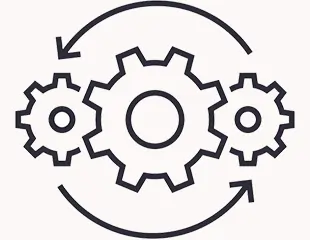
- Check the oil level: Before starting the generator, check the oil level to ensure that it is at the proper level. If the oil level is low, add the recommended amount of oil.
- Add fuel: Fill the fuel tank with gasoline. Be sure to use the recommended type of gasoline as specified in the owner's manual.
- Please turn on the fuel valve: Locate it and turn it on.
- Turn on the choke: Move the choke lever to the "closed" or "on" position.
- Pull the starter cord: Grasp the starter cord and pull it firmly until the engine starts. It may take several pulls to start the engine.
- Let the engine warm-up: Once the engine has started, let it warm up for a few minutes before connecting any devices.
- Connect devices: After the engine has warmed up, connect the devices you want to power to the generator using the appropriate outlets.
- Monitor the generator: While running, monitor it for any signs of issues, such as low oil pressure or overheating.
- Turn off the generator: When you are finished using the generator, turn off any connected devices first, then turn off the generator by following the instructions in the owner's manual.
Tips for maximizing efficiency and prolonging the lifespan of your generator

To maximize efficiency and prolong the lifespan of your 4000 watt generator, follow these tips:
- Optimize power usage: Turn off or unplug any unnecessary appliances or devices to reduce the load on your generator. Use power strips to easily switch off multiple devices when they're not in use.
- Prioritize energy-efficient appliances: Invest in energy-efficient appliances and electronics to reduce overall power consumption. Look for appliances with the ENERGY STAR label for maximum efficiency.
- Practice load management: Spread out the usage of high-wattage appliances throughout the day to prevent overloading your generator. For example, avoid running the dishwasher, washing machine, and air conditioning unit simultaneously.
- Regular maintenance: Follow the manufacturer's recommended maintenance schedule to keep your generator in optimal condition. This includes oil changes, filter replacements, and spark plug inspections.
- Store fuel properly: If you're using a gasoline generator, store fuel in an appropriate container in a cool, well-ventilated area away from any ignition sources.
Remember, regular maintenance and responsible usage are key to maximizing efficiency and ensuring the longevity of your generator.
Safety precautions when using a 4000 watt Generator

While generators provide a reliable power source during outages, it's important to prioritize safety when using a 4000 watt generator. Here are some essential safety precautions to follow:
- Carbon monoxide prevention: Never operate a generator indoors or in an enclosed space. Carbon monoxide is a silent killer and can quickly build up, leading to serious health risks or even death. Keep your generator outdoors and away from windows, doors, and vents.
- Proper grounding: Ensure your generator is properly grounded to prevent electrical shocks or hazards. Follow the manufacturer's instructions for grounding procedures.
- Extension cord safety: Use appropriate extension cords rated for the wattage of your appliances. Avoid using damaged or frayed cords; don't overload the generator by exceeding capacity.
- Fire prevention: Keep flammable materials away from your generator and avoid refueling while the generator is running or hot. Store fuel in a safe location away from any ignition sources.
Read the full article
0 notes
Text
Electric hand planers offer users the convenience of not having to handle a gas or electric planer. They are lightweight and easy to use. They come in various sizes and speeds, so you can find the perfect one for your needs. The four best electric hand planers of 2020 are the Porter-Cable PC60THP, the Dewalt DCP580B, the Wen 6530, and the DEWALT DW735X.Table of ContentsPORTER-CABLE Hand Planer, 6-Amp, 5/64-Inch (PC60THP)DEWALT 20V MAX Planer, 30,000 Cuts Per Minute, 2 mm Cut Depth, Brushless Motor, Bare Tool Only (DCP580B)WEN 6530 6-Amp Electric Hand Planer, 3-1/4-InchDEWALT Thickness Planer, Two Speed, 13-inch, 15 Amp, 20,000 RPM Motor (DW735X)Frequently Asked QuestionsIgnite Your PassionPORTER-CABLE Hand Planer, 6-Amp, 5/64-Inch (PC60THP)The PORTER-CABLE Hand Planer is a great choice for anyone looking for a reliable and affordable hand planer. With a 6-amp motor, it can remove material quickly and easily. The dust extractor bags attach to either side of the tool, keeping your work area clean. The overmold depth knob with 10 positive steps offers multiple depth control settings. The 3 chamfering grooves allow you to create multiple edge chamfers. The 11-1/2 in. cast aluminum shoe provides added control. The .078 in. depth of cut and .47 in. max rabbit depth make this hand planer a great choice for anyone looking for a fast and efficient way to remove excess material.DEWALT 20V MAX Planer, 30,000 Cuts Per Minute, 2 mm Cut Depth, Brushless Motor, Bare Tool Only (DCP580B)The first paragraph talks about the features of the product, and the second paragraph is about the advantages and disadvantages of the product.
DEWALT 20V MAX Planer
The DEWALT 20V MAX Planer is a cordless hand planer that features a brushless motor and 30,000 cuts per minute to achieve a fast removal rate.
A maximum depth of cut of 5/64 inches (2 mm) and a calibrated depth adjustment knob allow for precise adjustments.
The planer also features precision-machined front and back aluminum shoes for parallelism of cut, as well as a kickstand that allows the user to rest the planer on the work surface without gouging the material.
The DEWALT 20V MAX Planer also has some advantages and disadvantages. The advantages include the brushless motor which provides power and runtime, as well as the precision-machined front and back aluminum shoes which ensure parallelism of cut. However, the disadvantages include the fact that it is a bare tool only, which means that it does not come with a battery or charger, and that it is a bit on the expensive side, costing $249.WEN 6530 6-Amp Electric Hand Planer, 3-1/4-Inch has a 6 Amp motor that provides up to 34,000 cuts per minute. You can adjust the cutting depth anywhere from 0 to 1/8 inches with the 16 positive stops. The rabbeting guide lets you make rabbets up to 1 inch in size. The whole thing weighs 6 pounds, making it very lightweight and easy to maneuver. It comes with a power planer, dust bag, kickstand, parallel fence bracket, and a 2-year warranty.
The Good:
-lightweight and easy to maneuver
-rabbeting guide lets you make rabbets up to 1 inch in size
-6 Amp motor provides up to 34,000 cuts per minute
-adjustable cutting depth
The Bad:
-some users have said that the quality of the cuts is not as good as a corded electric hand planer
Overall, the is a good choice for a lightweight and easy-to-use electric hand planer. It has a 6 Amp motor that provides up to 34,000 cuts per minute and an adjustable cutting depth. The rabbeting guide is a nice feature that lets you make rabbets up to 1 inch in size. However, some users have said that the quality of the cuts is not as good as a corded electric hand planer.DEWALT Thickness Planer, Two Speed, 13-inch, 15 Amp, 20,000 RPM Motor (DW735X)The DEWALT Thickness Planer is a reliable and durable tool that is perfect for any woodworking project. The three knife cutter head delivers 30% longer knife life and makes knife changes faster and easier. The two-speed gear box allows users to change feed speed to optimizing cuts per inch at 96 or 179 CPI.
The fan-assisted chip ejection vacuums chips off of the cutter head and exhausts them out of the machine. The 19-3/4-inch cast aluminum base is 2 times more rigid than a standard 10-inch base and folding tables. The automatic carriage lock reduces the movement that causes snipe without the need for manual engagement by the user. The material removal gauge and extra large thickness scale deliver accurate cuts with every pass. The extra large turret depth-stop allows users to return to most frequently used thicknesses with ease. The purchase includes one stationary 13" Planer, in/out feed tables with fasteners (attached to the base of the Planer base), extra blades, and a dust hose adapter. The stand is not included. Frequently Asked QuestionsIn this Q&A, we will be comparing the 4 best electric hand planers of 2020. Let's get started!
Q: What are the benefits of using an electric hand planer?
A: There are many benefits to using an electric hand planer. The most common benefit is that electric hand planers are much faster than manual hand planers. They also have much more power than manual hand planers, meaning they are able to cut through wood with greater precision. Electric hand planers are also much quieter than manual hand planers, so they are perfect for use in areas where noise is an issue. last but not least, electric hand planers are much easier and faster to use than manual hand planers. Ignite Your PassionThis year, there are a few electric hand planers that stand out from the rest. Here are four of the best:
PORTER-CABLE PC60THP: The PORTER-CABLE PC60THP is a powerful electric hand Planer that offers 6 Amps of cutting power and 5/64-inch cutting depth. ThisPlaner has a brushless motor that delivers 30,000 cuts per minute and a 2 mm cut depth. This Planer is ideal for those who require a high level of accuracy and precision when planing boards or panels. At just over 20 pounds, this product is also lightweight and easy to move around.
DEWALT DCP580B: The DEWALT DCP580B is a powerful electric hand Planer that offers 30,000 cuts per minute and 2 mm cut depth. This Planer has a brushless motor that delivers a cutting depth of 2 mm and a fatigue-free operation. The DCP580B is also compact and lightweight, making it ideal for use in tight spaces.
WEN 6530 6-Amp Electric Hand Planer: The WEN 6530 6-Amp Electric Hand Planer is a powerful product that offers a 3-1/4-inch Planing width and 6 Amps of cutting power. This Planer has a soft grip handle that ensures a comfortable and reassuring grip during use. Additionally, the 6530 features a lock-off switch to prevent accidental start-ups, and a depth gauge that makes it easy to set the Planer to the desired cut depth.
DEWALT Thickness Planer: The DEWALT Thickness Planer is a powerful product that offers two speeds and a 13-inch cutting width. This Planer has a 15 Amp motor that delivers a 20,000 RPM speed and a depth of 13 inches. The Thickness Planer is ideal for precision and accuracy when planing wood into desired thicknesses.
0 notes